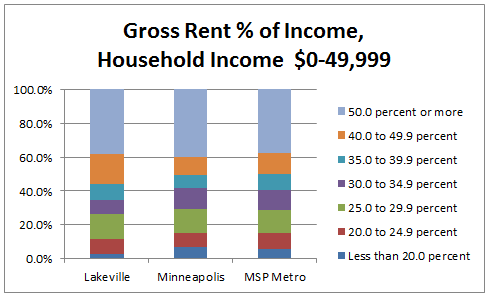
The retention ratio is typically higher for growth companies that are experiencing rapid increases in revenues and profits. New companies typically don’t pay dividends since they’re still growing and need the capital to finance growth. However, established companies usually pay a portion of their retained earnings out as dividends while also reinvesting a portion back into the company.

This is because different companies have different optimal ranges for their retention ratios. Ted’s TV Company earned $100,000 of net income during the year and decided to distribute $20,000 of dividends to its shareholders. You can use the retention ratio calculator below to quickly calculate how much of your company’s earnings have been or should be retained, by entering the required numbers.
Retention ratio definition
Companies in defensive sectors such as pharmaceuticals and consumer staples are likely to have more stable payout and retention ratios than energy and commodity companies, whose earnings are more cyclical. As a result, the retention ratio helps investors determine a company’s reinvestment rate. However, companies that hoard too much profit might not be using their cash effectively and might be better off had the money been invested in new equipment, technology, or expanding product lines. Larger, more mature companies will usually post lower retention ratios, as they are already quite profitable and do not need to invest as heavily in R&D.

The ratio is used by growth investors to locate those companies that appear to be plowing money back into their operations, on the theory that this will result in an eventual increase in their stock price. This anticipatory use of the ratio may be incorrect in cases where company management anticipates a business downturn, and so retains extra funds simply to build a reserve against the leaner times that are expected in the near future. The retention rate is calculated by subtracting the dividends distributed during the period from the net income and dividing the difference by the net income for the year. This is an important measurement because it shows how much a company is reinvesting in its operations. Without a steady reinvestment rate, company growth would be completely dependent on financing from investors and creditors. Company XYZ retains 40 % of the total profit and distributes 60 %; it can be seen as a signal of slow growth in the company’s business or the company doesn’t need more cash for its future growth.
Everything You Need To Master Financial Modeling
The reason the retention ratio is so high is that the tech company has accumulated profit and didn’t pay dividends. As a result, the company had plenty of retained earnings to invest in the company’s future. The retention rate for technology companies in a relatively early stage of development is generally 100%, as they seldom pay dividends. But in mature sectors such as utilities and telecommunications, where investors expect a reasonable dividend, the retention ratio is typically quite low because of the high dividend payout ratio. The numerator of this equation calculates the earnings that were retained during the period since all the profits that are not distributed as dividends during the period are kept by the company. You could simplify the formula by rewriting it as earnings retained during the period divided by net income.
The dividend payout and retention ratios offer insight into how much of a firm’s profit is distributed to shareholders versus retained. As you read this section, you will learn about special ratios that address dividend growth, return on assets, and equity. You will be exposed to their formulas, how to compute them, and which financial statements contain the information needed to calculate the ratios. You will read about the DuPont Equation (also known as the strategic profit model), which comprises multiple financial ratios. You will also learn how to interpret the ratios and apply those interpretations to understanding the firm’s activities.
Understanding the Retention Ratio
Dividends paid are not classified as an expense but rather a deduction of retained earnings. Dividends paid do not show up on an income statement but do appear on the balance earning retention ratio formula sheet. In other words, ABC keeps 80 percent of its profits in the company, and only 20 % of its net profit profits are distributed to shareholders as dividends.

If they decide to distribute all of their retained earnings among shareholders or if they have no plans of reinvesting back into the business, they may continue to make a profit but without significant growth. As well, a company that retains some of its net income but does not use it effectively may incur more debt or issue new equity shares to fund growth.In essence, the retention ratio helps investors assess their company’s reinvestment rate. When they pocket too much profit, they may not use their cash effectively and should instead invest the money to add more products or purchase new equipment. In most cases, new companies don’t distribute dividends and would rather use their profits to finance their growth. In simple words, the retention ratio is the opposite of the dividend payout ratio because it shows how much money from the profit the company decides to keep in its bank account.
Disadvantages of Retention Ratio
It also ignores the impact of debt on a company’s profitability and cash flows, which has its drawbacks but is very useful in comparing the operating businesses of companies on an apples-to-apples basis. The definitions of profitability and capital retained can differ depending on if you’re focusing on Profits and Losses or cash flows; these are the two primary differences of the two types of retention ratios. The payout ratio is the amount of dividends the company pays out divided by the net income.
- However, a mature company might have a low retention ratio as it is better for them to distribute dividends to its investors instead of reinvesting them into the business.
- Company XYZ had a net profit of 100,000 during the financial year FY 2019, and management decided to distribute a dividend of 60,000 (including dividend distribution tax) to its shareholders.
- Basically, a company’s future growth will depend on how much they reinvest and what return they can earn on that reinvestment.
- As a result, the retention ratio helps investors determine a company’s reinvestment rate.
- Confirming our statement from earlier, the inverse of the payout ratio is the retention ratio, so we can see that the sum of the two ratios equals 100% in all three years in the completed model output.
Our goal is to deliver the most understandable and comprehensive explanations of climate and finance topics. Carbon Collective is the first online investment advisor 100% focused on solving climate change. We believe that sustainable investing is not just an important climate solution, but a smart way to invest. The articles and research support materials available on this site are educational and are not intended to be investment or tax advice. All such information is provided solely for convenience purposes only and all users thereof should be guided accordingly.
Terms Similar to the Retention Ratio
A company might report this figure as Operating Income or as EBIT on their Income Statement, so it’s important you recognize both of them. I think that’s reasonable when you compare how efficient they’ve been with their capital historically. My Accounting Course is a world-class educational resource developed by experts to simplify accounting, finance, & investment analysis topics, so students and professionals can learn and propel their careers.
In year 3, Alice reported a net income of $15,000 and paid out a total of $1,000 in dividends. Alternatively, the retention ratio can also be calculated as 1 minus the dividend payout ratio. To forecast retained earnings, the process consists of taking the prior period balance of retained earnings, adding the net income from the current period, and then subtracting any dividends issued to shareholders. The alternative formula does not use retained earnings but instead subtracts dividends distributed from net income and divides the result by net income.
- The retention ratio definition is the ratio of the retained earnings to the net profit of a company.
- This may not be the case, and especially under the accrual basis of accounting, where there can be a substantial divergence between the two numbers.
- Higher retention ratios are not always considered good from an investor’s point of view because this means the company doesn’t give many dividends.
- EBIT is short for Earnings Before Interest and Taxes, and is also called Operating Income.
- In the case of payroll providers, this ceiling is ultimately capped by corporate profitability.
It is crucial to understand the retention ratio formula as the reinvestment policy of a company significantly impacts its growth prospect. Since every company has different characteristics and face various industry dynamics, every company has a different optimal retention ratio. The retention ratio is the inverse of the dividend payout ratio, which measures the proportion of net income paid out to investors as dividends or stock buybacks. Higher retention rates are not always considered good for investors because this usually means the company doesn’t give as much dividends.
Two Ways to Use the Retention Ratio Formula to Project Future Growth
Dividends are the money that public listed companies distribute to their investors. This is a way of distributing the value generated by the business back to its investors. Hence, before you come to a conclusion, make sure you understand the company and the industry you are analyzing. Now that we have understood the retention ratio definition, let’s dive into analyzing the retention ratio formula. ABC Company earned $200,000 in net profit during the financial year and decided to give dividends of $40,000 to its shareholders. To better understand the retention ratio, we must first understand the company that we are calculating the ratio for.
Can MSA Safety Incorporated’s (NYSE:MSA) Weak Financials Pull The Plug On The Stock’s Current Momentum On Its Share Price? – Simply Wall St
Can MSA Safety Incorporated’s (NYSE:MSA) Weak Financials Pull The Plug On The Stock’s Current Momentum On Its Share Price?.
Posted: Wed, 09 Aug 2023 10:43:12 GMT [source]
However, a mature company might have a low retention ratio as it is better for them to distribute dividends to its investors instead of reinvesting them into the business. The retention ratio definition is the ratio of the retained earnings to the net profit of a company. As retained earnings is the profit remaining after the dividends are distributed to the common shareholders from the net profit, the retention ratio measures the portion of net profit that is being reinvested into the business. The numerator of the above equation calculates the earnings that were kept during the year since all the profits generated by the company that is not distributed as dividends to the investors during the period are kept by the company. One could simplify the above formula by rewriting the numerator as earnings retained during the year divided by net income. Smaller businesses tend to prioritize business development and investments in research and development (R&D), which can be a reason why they are more likely to retain their earnings rather than distribute them as dividends.